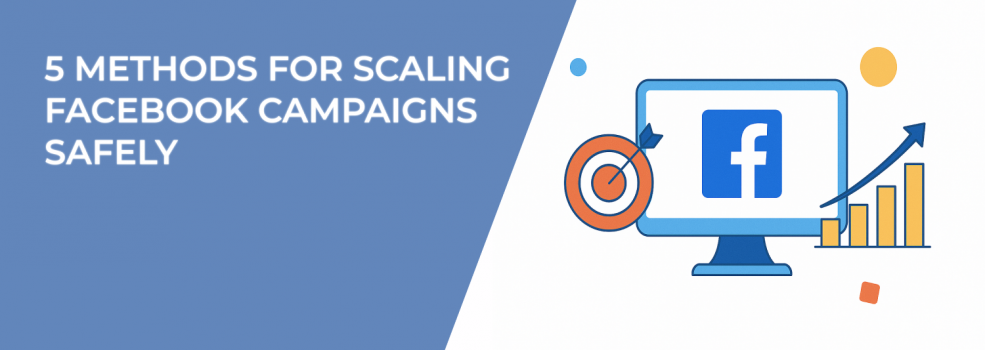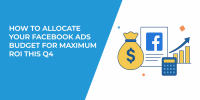Running Facebook ads that convert is one thing. Scaling them without wrecking your ROAS? That’s the real challenge.
If you’ve ever pushed your budget too fast and watched performance tank overnight, you know what we're talking about. Scaling Facebook campaigns isn’t just about spending more — it’s about doing it smartly, methodically, and in a way that protects your data and performance history.
Here are five tried-and-true methods to scale your Facebook campaigns safely — without burning through your ad budget or breaking the algorithm.
1. Slow and Steady Budget Increases
It might sound boring, but this is the golden rule of scaling on Facebook.
Instead of doubling your ad spend overnight, increase budgets incrementally. A good rule of thumb? Raise your budget by 15–20% every 3–4 days. This gives Facebook’s algorithm time to adjust without resetting the learning phase.
Pro tip:
Avoid making budget changes at night. Make adjustments early in the day so the system has a full cycle to adapt.
Aggressive scaling can confuse the algorithm — and when Facebook gets confused, results drop fast. Also, be on the lookout for common system flags like the “Ad Set May Get Zero” warning. If you’ve seen that message pop up, here’s why it happens and how to fix it.
2. Try Advantage Campaign Budget
If you're still manually adjusting ad set budgets, you’re likely slowing down your scaling potential.
Advantage Campaign Budget allows Facebook to automatically allocate budget across your ad sets based on real-time performance. It’s more efficient, more scalable, and increasingly essential as you grow.
To get the most from CBO:
-
Set clear minimums for high-performing ad sets;
-
Keep audience overlap to a minimum;
-
Avoid sudden structural changes that could reset learning.
And don’t overlook the impact of campaign objectives here. Understanding which objective works for which stage of your funnel is key. This guide to Meta ad objectives can help you avoid mismatches that quietly drain budget.
3. Duplicate Winning Ad Sets with Variation
Got a winner? Don’t touch it — duplicate it.
Duplicating ad sets allows you to scale horizontally while minimizing disruption to your best performers. Start with 2–3 copies of your top ad set, then change one variable per version. This might be:
-
A broader audience with the same creative;
-
A new lookalike source;
-
A different ad format or CTA.
Looking to go deeper with targeting strategies while scaling? This article on custom vs. lookalike audiences breaks down which approach works best — and when.
Just make sure you’re not overlapping audiences. That can trigger auction competition within your own campaign.
4. Keep Creatives Fresh — Constantly
Scaling without rotating creatives is like trying to grow a garden without water.
Facebook rewards freshness. And ad fatigue? It creeps in faster than most advertisers expect. When CTRs drop or CPMs rise without reason, creative fatigue is often the culprit.
What should you test?
-
3–5 new creatives weekly;
-
Multiple formats (e.g., static images, short-form video, carousels);
-
Fresh angles, updated CTAs, and new value props.
For a structured approach, see how to identify ad fatigue early and fix it fast. It’ll save you budget — and keep your campaign from stalling mid-scale.
5. Expand Targeting — But Don’t Abandon Strategy
As you scale, narrow interest targeting tends to hit a wall. To grow further, you need to let Facebook’s algorithm breathe.
Start by expanding your reach, but layer it wisely:
-
Open up age ranges and locations;
-
Remove restrictive interests where possible;
-
Combine broad audiences with retargeting exclusions.
Want to know when to switch from cold to warm targeting — or how to do both at once? Check out this post on retargeting vs. broad targeting. It’s essential reading for scale-minded media buyers.
Scaling doesn’t mean getting sloppy. It means amplifying what works without blowing your budget or breaking your structure.
Final Thoughts
Scaling Facebook campaigns is part art, part science. If you rush it, the platform pushes back. But with the right mix of steady budget increases, smart duplication, creative refreshes, and audience expansion, growth becomes predictable and sustainable.

